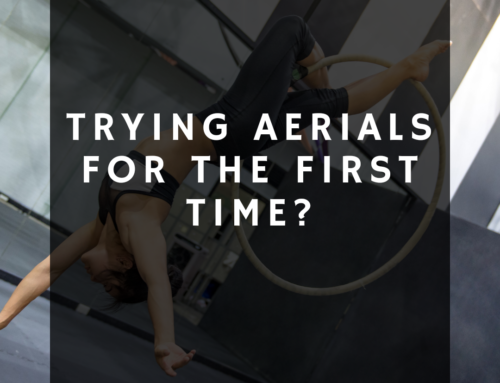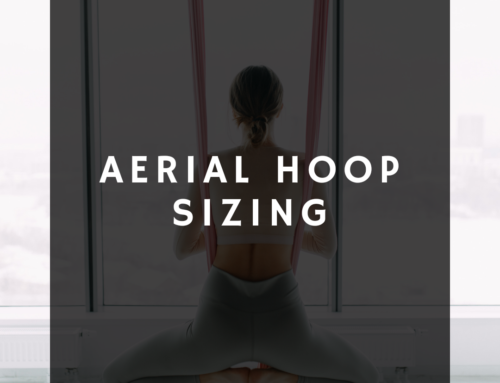With so many options of fabric out there (no stretch, low stretch, medium, high, super high! Nylon, Tricot, Parachute, Mechano etc!), it’s a good idea to research your options and find what you prefer. Absolutely everyone has their own preference. Here’s a quick breakdown:
Denier: Refers to the density and weight of the strands of the fabric. For example, 40denier is lighter than 80 denier. This doesn’t necessarily relate to the load rating of fabric, just weight and thickness.
Stretch: Refers to the stretch with weight bearing at the base of the silks. The higher you are, the less you will stretch there. However the higher the silks, the more you will stretch when at the base.
________________
No Stretch Fabric is not necessarily ‘no’ stretch – all fabric will have a slight give. No Stretch will only minorly stretch bearing weight. This type of fabric is great for absolute beginners (introductory), however as soon as you can climb, it is harsher wrapped around the body. However, some people prefer the security of minimal stretch as it will not stretch as significant. No stretch fabric will have around 5cm of stretch per metre with tricot, but can vary from brand to brand and type of fabric. Also note* This is based on average static body weight, and will differ with different weight, different loads (ie drops) and different pressure on widths of the fabric.
Low – Medium Stretch is a perfect middle ground. Although it may be harder for introductory aerialists to use for the first few weeks, as stretch makes it a little harder to climb consistently before an aerialist has enough strength. However, it is quickly adaptable and we would recommend this to all aerialists. Low-medium has enough give to feel comfortable in drops with a little bounce, lessening the harshness of a drop. It allows a little give to wrap and do tricks comfortably. Low-medium stretch allows approximately 8-12cm of stretch per metre, though can vary for different weights and loads. Therefore, if you are using 1m silks, you would stretch down approximately 12cm at the base bearing your weight. If your silks are 6m high, you will stretch approximately 60cm with your weight at the base. If you are performing a drop or putting extra pressure, naturally the stretch will be more than static. This is the fabric we use at Aerial Equipment and is by far the most sourced and sought after, and sold for both beginners and professionals and used primarily around the world in studios, circus, events.
High and Super High Stretch is, as is obvious, very stretchy. This is a fabric that is very dependable on the person selling, so it’s always good to find a max stretch. This is very bouncy and stretchy! You will need to pull down multiple times to find your place on it, but it can be plenty of fun and feels completely different. Not recommended for beginners. The stretch per metre on this is very variable from brand to brand.
Aerials Australia fabric is a low- medium 40 Denier Tricot, rated at 900kgs load. 40 Denier is a light, airy, yet super strong fabric and is a perfect middle ground for all aerial arts. It has a perfect hand hold, and has enough length stretch to be comfortable, but not so much that it is difficult. Width only comes into play in hammock, when you’re cocooned and the width is spread out.
Some tips:
Not all stretch will be exactly the same for each brand, type of fabric, or manufactured roll. Allow slight variance before committing to ensure you purchase the right stretch for you. Always test first and feel free to ask for samples from any manufacturer.
Stretch can vary based on how you attach your hardware to your fabric. Ensure your fabric is square against your figure 8 or carabiner.
When first attaching any fabric to your hardware, allow it a little higher than you expect. Fabric takes a little to settle into the hardware after load has been applied via body weight.
As always, please give us a call or email if there’s anything we can help with, we’d love to help you get up on your silks right away!
Here is a great video from Aerial Dancing on stretch:

